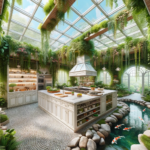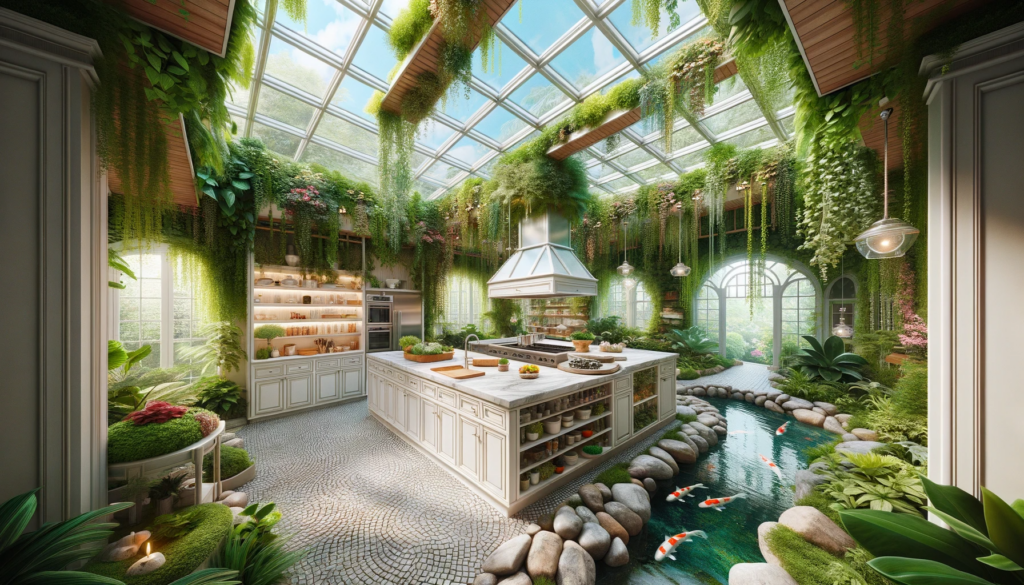
For food aficionados, the kitchen isn’t just a utilitarian space; it’s the heart and soul of a home. It’s where culinary dreams come alive, flavors meld, and memorable meals are crafted. Dream kitchens go beyond aesthetics; they’re about creating a well-designed environment that enhances the cooking experience, facilitates creativity, and invites exploration. For those passionate about food, the design of a kitchen can be as instrumental to their culinary journey as the ingredients they choose, making it an essential canvas for their gastronomic artistry.
Dream kitchens are the ideal cooking and gathering space for homeowners. The kitchen, traditionally seen as the functional center of a house, has undergone significant transformations in design and utility. With advancements in technology and a growing emphasis on sustainable living, future kitchen designs are set to be a harmonious blend of innovation, aesthetics, and eco-consciousness.
The Rise of Smart Kitchens
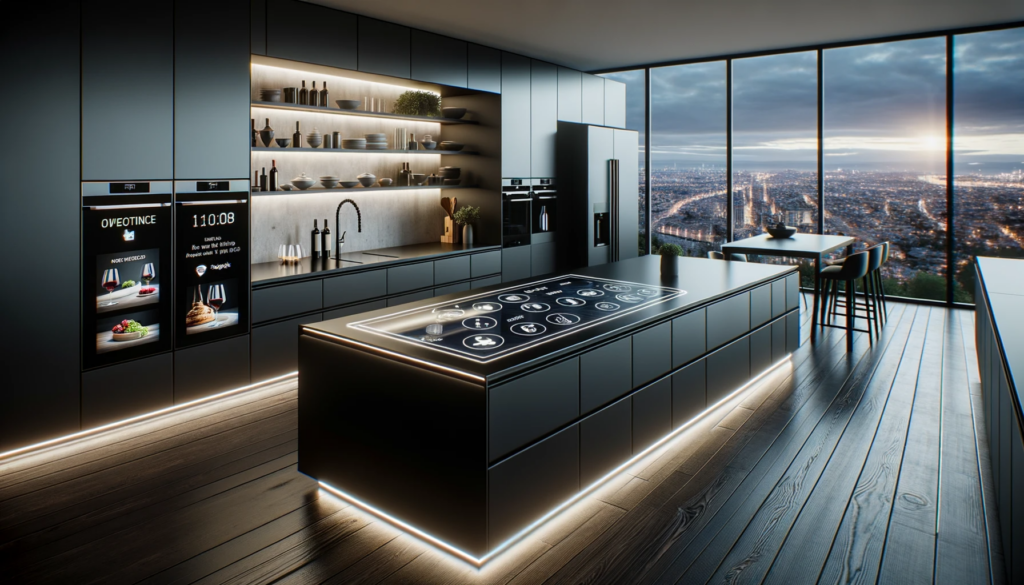
In today’s digital age, the kitchen is undergoing a revolutionary transformation, evolving into what many now dub the “smart kitchen.”
This modern culinary space leverages cutting-edge technology to create an environment that’s not only functional but also highly efficient and interactive. From refrigerators that notify you when you’re running low on essentials, to ovens that can be preheated with a simple voice command, smart kitchens are redefining the cooking experience. Intelligent gadgets, like Wi-Fi enabled coffee makers or precision cookers, streamline daily tasks and offer a level of precision previously hard to achieve. Moreover, integrated systems can suggest recipes based on what’s in the fridge, minimizing food waste and sparking culinary creativity. As these technologies become more accessible, the smart kitchen is set to become the new standard, merging culinary tradition with the conveniences of the digital world.
A couple of key components for this kitchen of the future:
- Seamless Smart Appliances: Future kitchens will seamlessly integrate technology. Envision ovens that respond to voice commands or refrigerators that offer recipe suggestions based on their contents. The role of technology will be to enhance cooking efficiency and add convenience.
- Interactive Countertops: Advanced countertops might serve dual purposes, transitioning from a cooking range to a touch screen for digital recipe access, and streamlining the culinary process.
Sustainable Design Elements
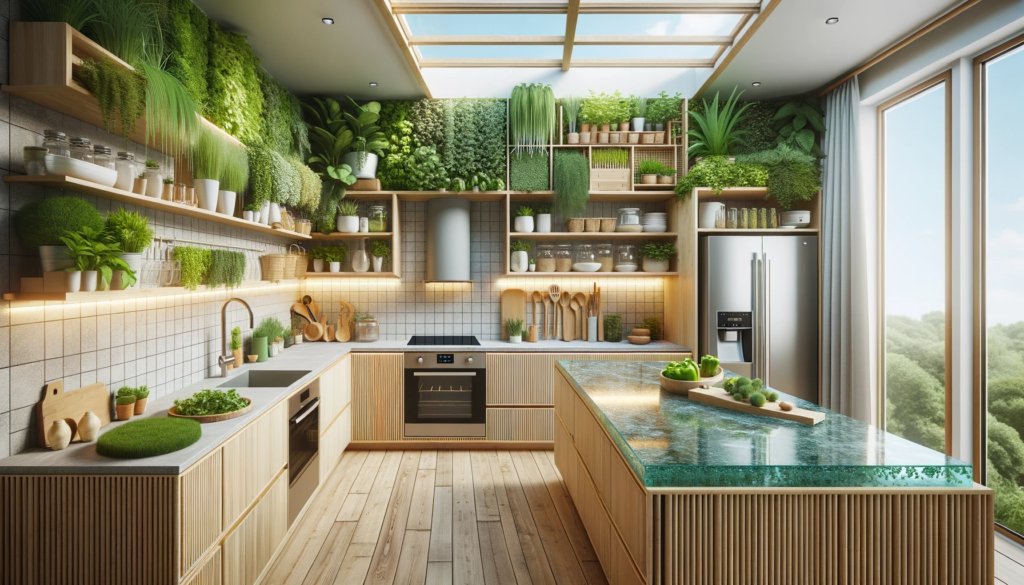
Sustainable design elements focus on reducing environmental impact by choosing materials and practices that minimize waste and energy consumption.
This could mean using reclaimed or responsibly sourced wood for cabinetry, opting for countertops made from recycled glass, or integrating energy-efficient appliances that conserve electricity and water. Moreover, the use of non-toxic paints and finishes ensures healthier indoor air quality, while large windows can enhance natural light, reducing the need for artificial lighting. Incorporating local materials not only reduces transportation emissions but also adds a touch of authenticity to the space. Additionally, the rise of indoor plants and green walls in kitchen designs not only elevates aesthetics but also improves air quality. Overall, sustainable design elements embody a commitment to environmental stewardship, creating spaces that are both beautiful and conscientious.
Key components of sustainable design elements:
- Utilizing Recycled Materials: Eco-friendly will be synonymous with modern kitchen designs. Expect to see countertops, cabinets, and flooring crafted from recycled materials, prioritizing both style and environmental considerations.
- Opting for Energy-Efficient Appliances: Devices that minimize energy consumption, from induction stoves to high-efficiency dishwashers, will become standard, reflecting a commitment to environmental responsibility.
Embracing Open Layouts and Versatile Islands
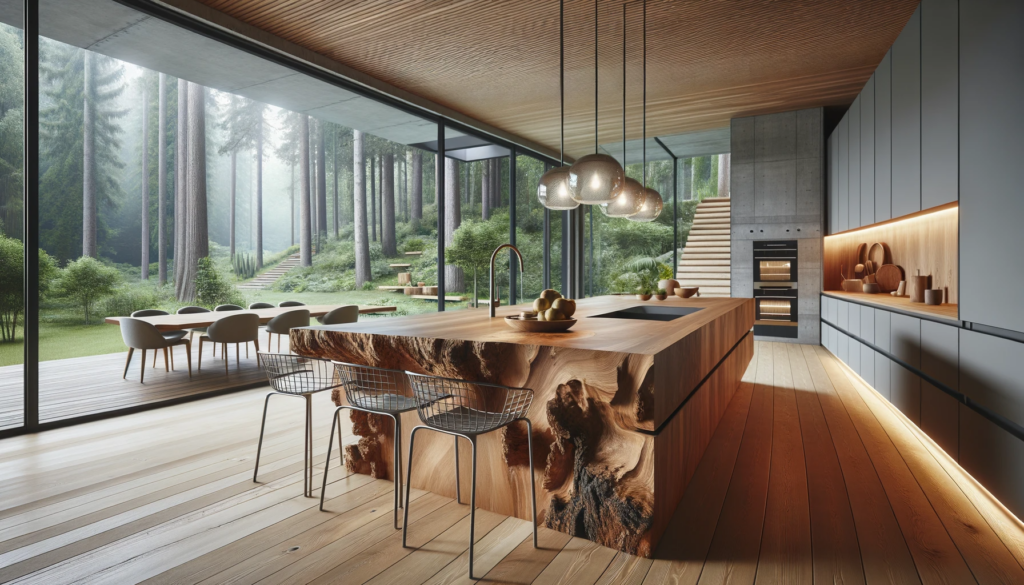
These open designs for dream kitchens symbolize a continued trend toward communal living and fluid spaces.
By eliminating walls that once segregated the kitchen from other areas, open-concept designs have revolutionized the way we perceive and utilize this space. These designs promote a fluid transition between the kitchen, dining, and living areas, creating a harmonious and integrated living experience. While there was a brief period in the early 2020s when people reconsidered this layout due to the global pandemic, the trend quickly rebounded, proving the resilience and popularity of open-concept living. This approach not only amplifies the feeling of space but also fosters a communal atmosphere, positioning the kitchen as the vibrant epicenter of the home. At the heart of this transformative design is the multifunctional kitchen island, which has transcended its original role as a simple countertop. Today’s islands are equipped with an array of features including innovative storage solutions, built-in appliances, and versatile seating options. This allows them to seamlessly transition between different roles – from a preparation area to a casual dining spot, a space for children to do their homework, or even as a chic cocktail serving station. The kitchen island’s ability to adapt to the ever-changing needs of daily life ensures that the kitchen remains a bustling hub of activity, rich conversation, and culinary innovation.
Key elements of this open versatile kitchen design will continue to include:
- Fluid Transition: Open-concept designs facilitate a smooth flow between the kitchen, dining, and living areas.
- Communal Atmosphere: The kitchen becomes a social hub, encouraging interaction and conversation.
- Multifunctional Kitchen Island: Serving as a prep station, dining area, workspace, and more, the kitchen island is central to this layout’s functionality.
- Adaptability: The kitchen adapts to various daily activities, ensuring it remains a central, active space in the home.
Diverse Aesthetic Choices
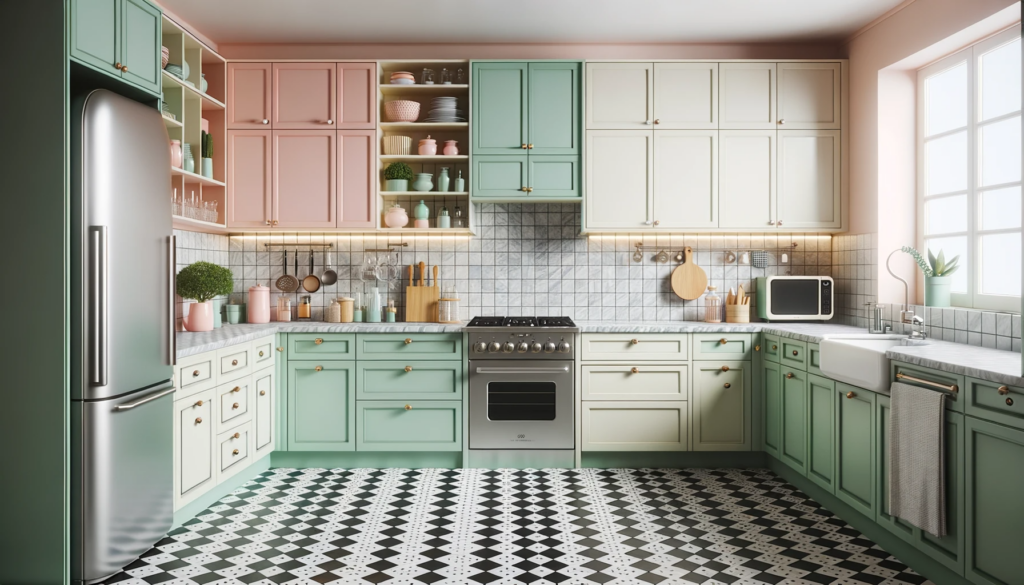
Diverse aesthetic choices allow homeowners to craft spaces that resonate with their unique tastes and cultural influences.
While some gravitate towards the rustic allure of farmhouse kitchens, with their distressed wood and antique embellishments, others find solace in the timeless charm of mid-century designs, characterized by retro patterns and classic hues. Mediterranean kitchens capture the warmth of sun-kissed regions with terracotta tiles and intricate mosaic backsplashes, while industrial kitchens evoke an urban edge with exposed brick and metallic finishes. Furthermore, fusion styles like “Boho-chic” blend eclectic elements for a laid-back, artsy vibe, and “Modern Victorian” merges contemporary appliances with antique furnishings. In essence, the vast spectrum of aesthetic choices ensures that every dream kitchen tells a distinct story, reflecting the rich tapestry of experiences, memories, and aspirations of its inhabitants.
Key elements of diverse aesthetics will incorporate:
- Dark and Light Design Palettes: While light colors remain classic, there’s a continued shift towards richer kitchen themes with deep blues, charcoals, and other intense shades, often complemented by metallic or wood details.
- Vintage Elements: Elements from the past, such as brass fixtures or retro tiles, are being integrated into contemporary designs for added character.
- Prioritizing Personalization: Bespoke designs will gain popularity, allowing homeowners to infuse their spaces with individuality through distinct tiles or color choices.
Innovative Green Solutions

Catering to those with a penchant for freshness but perhaps lacking in sprawling outdoor spaces, vertical gardens, and herb walls are becoming a kitchen staple.
For those who appreciate the harmony of nature and culinary artistry, contemporary dream kitchens are evolving to seamlessly incorporate elements of both. A standout feature in this transformation is the flourishing presence of fresh herb gardens, strategically positioned right above the kitchen island. This innovative design choice brings a burst of green vitality to the space, ensuring that fresh, organic herbs are readily available at your fingertips, right in the heart of your culinary workspace. This isn’t just a convenience; it’s a visual and tangible commitment to a fresher, more natural way of living, reducing the need for store-bought herbs and their associated transportation carbon footprint.
In these kitchens, the lush greenery of the herb gardens becomes a central focal point, drawing the eye and adding a touch of nature’s serenity to the space. The gardens thrive under the abundance of natural light, further enhancing the kitchen’s ambiance and creating a pristine setting for meal preparation. By integrating these vibrant herb gardens into the design, contemporary kitchens transform into spaces that celebrate both aesthetic beauty and the joys of fresh, homegrown ingredients.
Key components of this green design are:
- Lush Greenery in the Culinary Space: Fresh herb gardens, positioned directly above the kitchen island or along the walls, become a central feature, offering immediate access to organic herbs and infusing the space with vibrant greenery.
- Aesthetically Pleasing and Practical: The integration of herb gardens not only adds a touch of nature’s charm to the kitchen but also ensures a fresh supply of herbs, combining visual appeal with practical benefits.
- Natural Light and Fresh Ingredients: The abundance of natural light not only enhances the overall ambiance of the kitchen but also nurtures the herb gardens, creating a pristine setting for meal preparation and celebrating the connection between nature and cooking.
Refined Storage Solutions
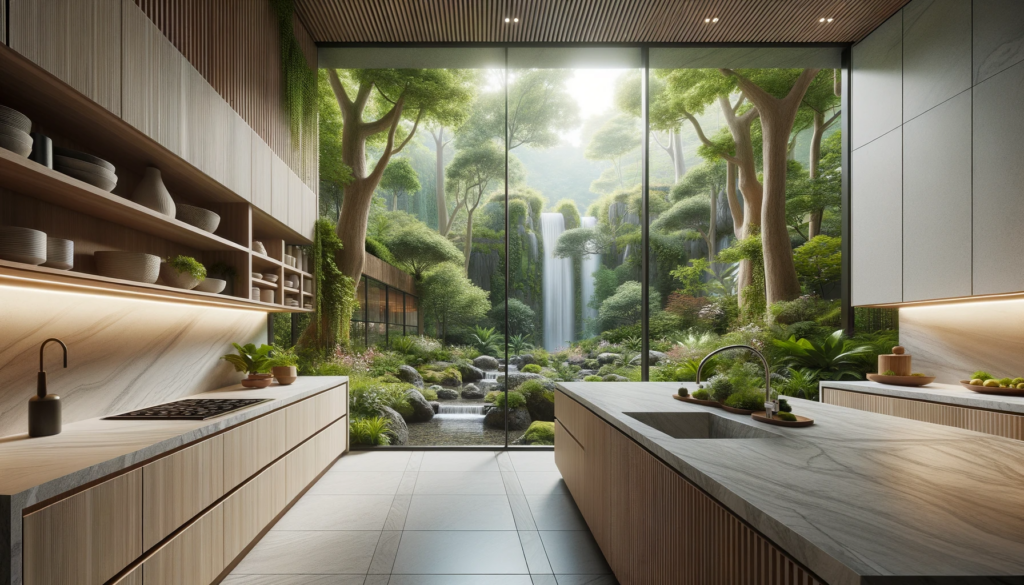
Efficient storage is key. Upcoming designs will feature innovative solutions like optimized racks, concealed cabinets, and multi-tiered drawers, maximizing space without compromising aesthetics.
Bulky cabinets and protruding shelves are relics of the past and are getting replaced by sleek pull-out drawers, hidden compartments, and ingenious vertical storage systems, all seamlessly woven into the kitchen’s overall design. Custom cabinetry has risen to the challenge, now able to tuck away everything from spice racks to appliances, ensuring a pristine, uncluttered countertop. Meanwhile, clever solutions for corners and under-counter spaces exploit every available inch, ensuring no space goes to waste. This revolution in storage isn’t just about tidiness; it’s about creating a harmonious blend of form and function, streamlining the cooking process, and setting the stage for culinary creativity and effortless entertaining.
Key points of efficient storage design:
- Optimized and Concealed Storage: The use of sleek drawers, hidden compartments, and vertical storage maximizes space while maintaining a minimalist aesthetic.
- Custom Cabinetry: Tailored solutions allow for the concealment of appliances and clutter, ensuring a clean and organized workspace.
- Innovative Space Utilization: Corner solutions and under-counter pull-outs ensure every inch of space is used efficiently, contributing to a seamless cooking experience.
Experimenting with Textures
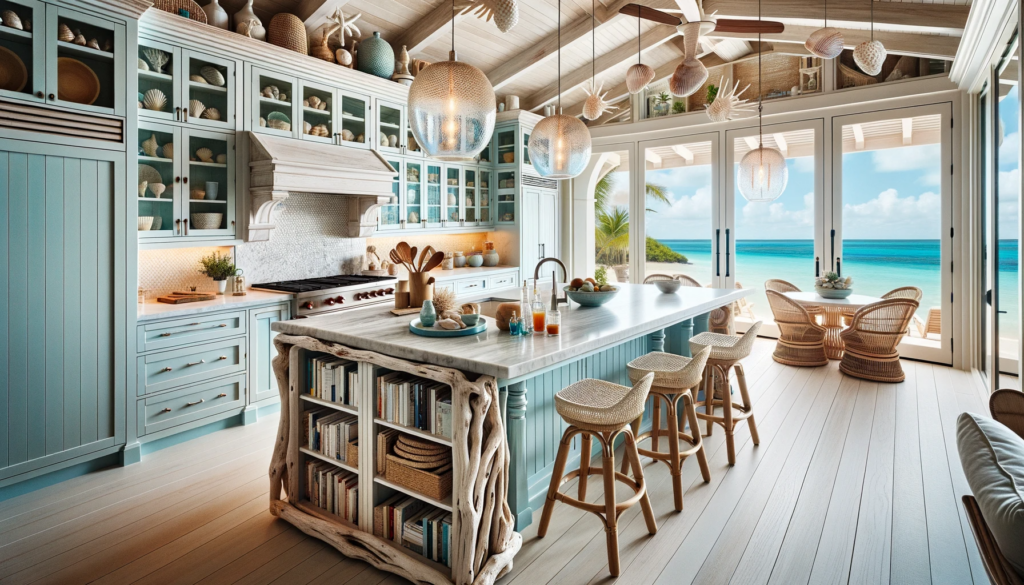
Expect a variety of finishes in future kitchens, from cabinets with velvety textures to islands with unexpected materials, offering both visual appeal and tactile satisfaction.
The modern kitchen has transformed into a canvas for artistic expression, with a noticeable surge in the use of diverse textures and materials that elevate these spaces far beyond their culinary functions. Homeowners and designers alike are embracing the art of tactile contrast, masterfully blending elements that are rough with those that are smooth, and combining matte finishes with glossy surfaces. Envision the elegance of a sleek marble countertop standing in bold relief against a rustic wooden backsplash, or the warm glow of hammered copper fixtures casting a lustrous sheen beside hand-painted tiles. These are not arbitrary choices; they are deliberate decisions aimed at creating a rich sensory experience. The kitchen, in this artistic reimagining, transforms into a space that does more than facilitate meal preparation—it becomes a sensory haven, a place that engages both touch and sight, inviting all who enter to connect more profoundly with their surroundings.
Key elements of this texturized design are:
- Tactile Contrasts: The intentional blending of different textures and finishes, such as rough with smooth and matte with glossy, creates a rich sensory experience.
- Material Diversity: The use of varied materials, from sleek marble and rustic wood to hammered copper and hand-painted tiles, contributes to the kitchen’s aesthetic appeal.
- Sensory Engagement: These design choices transform the kitchen into a space that stimulates the senses, encouraging deeper engagement and interaction with the environment.
Fusion of Designs
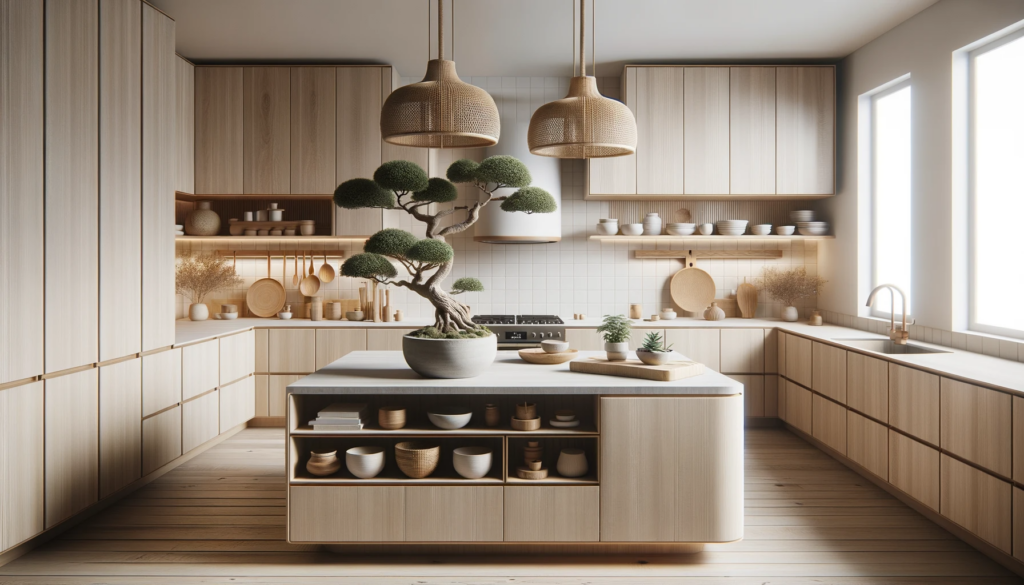
The seamless fusion of different popular designs like “Japandi” will be a growing trend.
The innovative merger of diverse design traditions has given rise to kitchen spaces that are at once novel and harmonious, seamlessly weaving together varied cultural aesthetics. Take Japandi, for instance—a splendid blend of Japanese minimalism and Scandinavian functionality. In a Japandi-style kitchen, the serene simplicity characteristic of Japanese design coexists with the cozy warmth intrinsic to Nordic interiors. Picture a space defined by clean lines, a muted color palette, and a generous use of natural materials like wood and stone. Yet, the magic of this design fusion lies not just in its visual appeal, but also in the experience it cultivates. The layout is meticulously planned to maximize space and create a seamless flow, ensuring that every tool and ingredient is effortlessly within reach. Ambient lighting adds a layer of tranquility, casting a soothing glow that transforms the kitchen into an ideal backdrop for culinary enthusiasts who hold aesthetics and efficiency in high regard. Fusion designs like Japandi represent a refreshing departure from the ordinary, reimagining the kitchen as a sanctuary for both cooking and relaxation.
Notable elements of Japandi are:
- Cultural Fusion: Japandi seamlessly blends Japanese minimalism with Scandinavian functionality, creating a space that is both innovative and harmonious.
- Focus on Materials and Design: The use of natural materials like wood and stone, along with clean lines and a muted color palette, contributes to the serene and cozy aesthetic.
- Enhanced Experience: The thoughtful layout maximizes space and ensures a seamless flow, while ambient lighting adds tranquility, creating a kitchen that is as efficient as it is aesthetically pleasing.
Timeless Designs
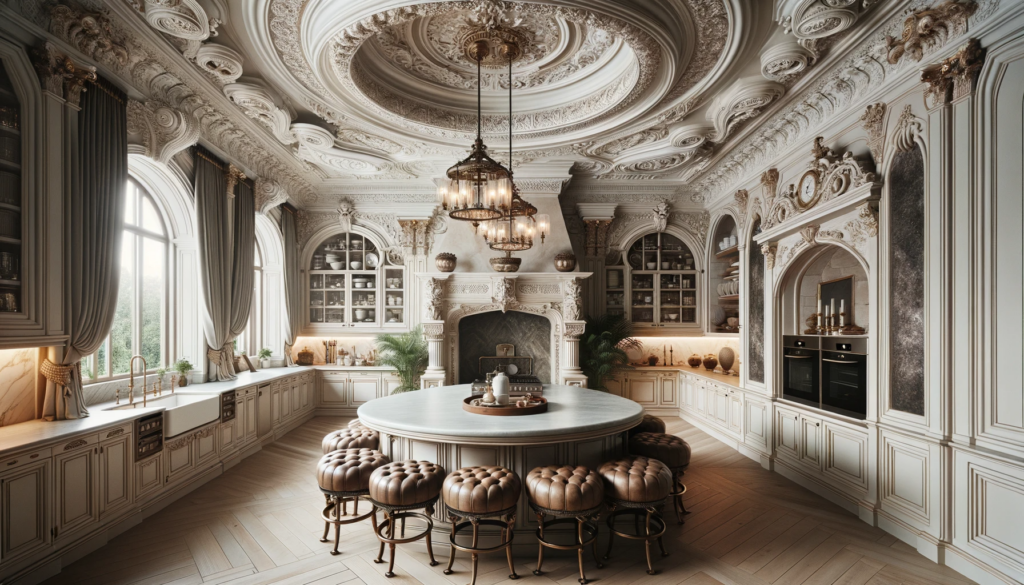
These timeless dream kitchens evoke a sense of enduring elegance, seamlessly blending form and function.
The aesthetic allure of timeless kitchen designs stems from their thoughtful integration of classic elements, ensuring a sophisticated and enduring appeal that transcends fleeting trends. Imagine the elegance of shaker cabinets paired with the luxurious touch of marble or granite countertops, all grounded by the warmth of hardwood floors. These spaces are typically bathed in subdued, neutral color palettes, providing a versatile backdrop that allows personal accents and vibrant culinary creations to shine. A key feature of these designs is the emphasis on harnessing ample natural light, which not only enriches the ambiance but also creates an immaculate setting for meal preparation. By melding these perennial design elements, timeless kitchen styles guarantee that the heart of the home remains a welcoming and chic sanctuary, steadfast amidst the constant flux of design trends.
Key elements of a timeless luxury kitchen:
- Classic Design Elements: The use of shaker cabinets, marble or granite countertops, and hardwood floors provides a sophisticated and timeless aesthetic.
- Subdued Color Palette: Neutral tones dominate, offering a versatile backdrop for personal touches and colorful culinary displays.
- Ample Natural Light: A focus on maximizing natural light enhances the ambiance and creates a pristine setting for meal preparation, ensuring the kitchen remains inviting and stylish through time.
The dream kitchens of tomorrow are not merely a space for cooking but an embodiment of technological advancement, sustainable practices, and personalized design. These projected trends provide a glimpse into the future, encouraging homeowners to reimagine and reshape their culinary spaces.







